|
Woman
Lankan women infuse fresh ideas to a traditional industry
|
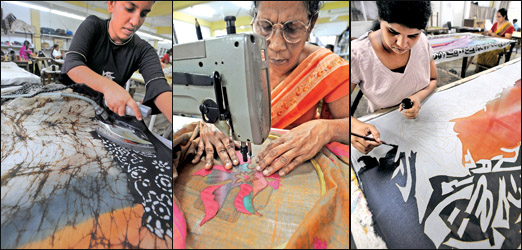
Artisans adding colour to give a fresh outlook |
With vibrant colours embedded on the soft, silky cloth batik has hit
the trendy fashion scene while becoming the latest fashion statement of
women here and abroad. Shedding the traditional rough cloth, limited
colours and designs with a striking shift of material, colour and
design, the fresh and feminine outlook experimented in batik has created
ripples in fashion circles.
The cobalt blues, watermelon reds, sheer fabrics and slinky cuts of
Sri Lankan batiks are vying for a spot on the world's catwalks. And
several Sri Lankan women are behind it all.
Batik is the art of decorating fabric with molten wax and then
dipping it in dye, which does not penetrate the wax and so leaves behind
intricate patterns, often in many colours.
Yolanda Aluwihare, an award winning designer says batik can offer a
wide variety.
She mixes up her line of fashionable clothing with satin, silk,
applique work, jute cloth, lace, embroidery, sequins and light
ornaments.
Drawing inspiration from nature and animals, Aluwihare's flowing
clothes are snapped up by fashion lovers in the Middle East, Europe and
Japan, she said, adding that a seven-yard sari retailed for around Rs.
37,000.
"I often experiment with new fabric and accessories to give simple
designs that extra sparkling effect," Aluwihare said.
|
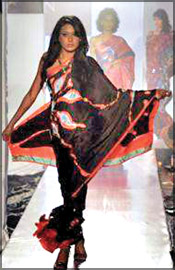
A model in batik saree |

Darshi Keerthisena |
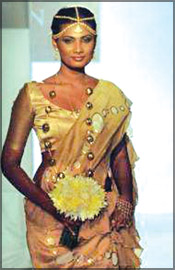
Bridal attire in batik |
In the sleepy coastal village of Koswadiya, another promising batik
designer Dharshi Keerthisena is creating batik swimwear, beach wraps,
bridal gowns and even denims.
"Traditional batiks use bright colours. I work with a lot of pastels
on different fabrics that are not associated with batiks like twill,
voile, silk chiffons and silk georgette for saris," she said. The
results are stunning - candy pinks have motifs of deep purple and violet
while bright orange adds a touch of glamour to a stark black design.
There is a huge demand for Sri Lankan batiks in India and in Europe,
the young designer claims.
While the name of this ancient craft is Javanese, the technique
itself is popular in many Asian and African countries and was once an
important part of Sri Lanka's vital textile sector. "My greatest
achievement is taking Sri Lankan sarees and talent to India which is a
talent rich country. Indians embrace it well because it is something
different. Through my creations I wanted to show what Sri Lankans can
do. Sri Lankan culture is unique. I hope to promote this uniqueness. Sri
Lankan talent and style are different. I want to take it to the global
market," she said.
"I opened the first store in Bangalore last year. Through Colombo
Fashion Week 2007, I got the chance to meet Indian designer Ajay Singh.
With the latest collection in Collage, Chennai, buyers have increased
and there is a good demand," she said.
|
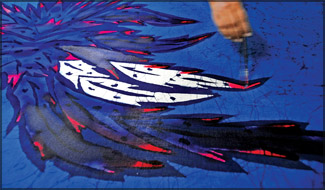
Designs have taken a new twist |
"The idea of having the factory in the village [of Koswadiya] is to
empower women. Ninety five per cent of the staff is women. At the moment
I have a staff of seventy. During my father's time when tourism was up
we had 350 workers. I want to take it back there," she said.
Turning their back on modernisation, local designers use firewood to
heat the water to boil the fabric and sun-dry each stage of production.
Their electric sewing machines and irons are the only modern
conveniences used.
"It's a complex art to learn and very time-consuming. For instance it
takes about 10 days to finish one hand-dyed sari," said Indra Padmini,
41, a veteran batik artisan.
There is no right or wrong way in creating batik products, as hot wax
seeps through the fabric to make both sides identical, Padmini said.
Craft Council Chairman Buddhi Keerthisena says they are gradually
introducing batik into local fashion study courses to give a fresh
outlook to the ancient art. "Hopefully, we will get more supermodels to
strut the world's catwalks in our designs." Agencies
Natural ways to lighten your skin
Dark spots, and freckles, and skin-damage - Looking to lighten your
complexion? Every shade of skin is beautiful, but as we grow older our
skin tone can change. Freckles may appear, dark spots can arise, and
skin may not be as light as it once was. So, if you're still not ready
to embrace your dark side, read on for a few natural whitening tips and
tricks.
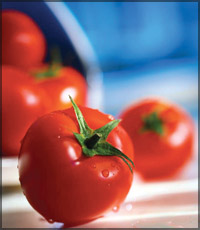
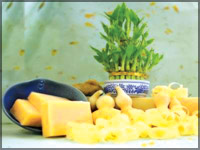 Use
sunblock Use
sunblock
One of the easiest ways to stay fair is to use sunblock on a daily
basis.
Find a moisturiser that includes an SPF of 15 or higher and use it
every morning after washing your face. Sunblock not only prevents your
skin from getting darker, but also blocks harmful UV rays that can cause
cancer and premature aging. Remember your hands when applying sunblock,
as they are a prime area for age spots.
Exfoliate
Exfoliating once a week will remove dead skin cells to lighten and
brighten your skin. Salt removes dry, flaky, dead skin. Wet face, apply
a couple of tablespoons of sea salt, then gently massage with fingers.
Focus on the T-zone and cheeks, but avoid the eye area. After one or two
minutes, rinse with cold water to tighten the pores.
It is important to do this regularly, or face-creams will not
penetrate.
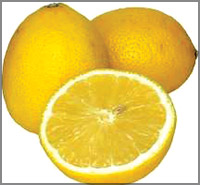
You can do this maximum once per week.
Make a mask
A homemade mask is a great way to lighten your skin and a good excuse
to kick back on the couch. Try using one once a week. Use one tablespoon
of each of the following: sandalwood paste, lemon juice, tomato juice,
and cucumber juice. Mix them all together to form a paste. Spread the
mixture on your face and wait until it dries. Rinse and moisturise for a
natural glow.
The exterior matters
 We
spend a lot of time on the interior of our homes but often neglect the
exterior. It is just as important to keep the outside of the house in
peak condition, making it sound and enjoyable to live in and adding
value should you come to sell. We
spend a lot of time on the interior of our homes but often neglect the
exterior. It is just as important to keep the outside of the house in
peak condition, making it sound and enjoyable to live in and adding
value should you come to sell.
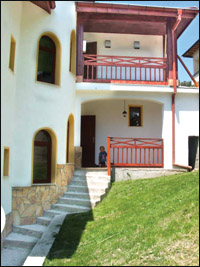 Once
you've stepped inside the front door, it is extremely easy to forget
about the outside. Money and time spent revamping the interior can be
wasted if you don't pay attention to the structure of the house.
Problems can arise such as, cracks in the paintworks, leaky roofs and
rising damp. Any new docor will feel the effect of this and as a result
may need to be done all over again. Dry weather is the best period to
tackle maintenance on the exterior of your property as the weather can
allow for sufficient drying times for paint work and sealing treatments. Once
you've stepped inside the front door, it is extremely easy to forget
about the outside. Money and time spent revamping the interior can be
wasted if you don't pay attention to the structure of the house.
Problems can arise such as, cracks in the paintworks, leaky roofs and
rising damp. Any new docor will feel the effect of this and as a result
may need to be done all over again. Dry weather is the best period to
tackle maintenance on the exterior of your property as the weather can
allow for sufficient drying times for paint work and sealing treatments.
Start by carrying out regular checks for subsidence and damp as this
will help to stop serious structural problems occurring later on. Look
out for any zigzag cracks.
Check that brickwork and mortar are in good condition. Crumbling
mortar is a sign of deterioration from weathering. Wherever the
weathering has occurred, will need to be re-pointed. Check that any soil
is 15cm below the damp-proof course to prevent the risk of rising damp.
Blocked gutters and constant dripping on the exterior can cause damp
problems. Make sure you clean out the gutters regularly and ensure the
joints aren't leaking. If they are, use a specialist sealer. Paint the
outside of your house in warm, dry weather and never in rainy weather.
Before you start clean and repair gutters and down pipes.
Remove flaky paint with a wire brush and fill any holes with a
filler. Choose a specialist masonry paint and apply using a brush or
roller.
For woodwork- First rub down the painted surfaces using wet/dry paper
and fill any cracks using a flexible wood filler, scrape out loose putty
from window frames and reseal, cut out any rotten wood and replace with
new. Finally paint woodwork with an exterior gloss.
aprilhamilton.com
Bean sprout sambol
Ingredients :
125 g Fresh bean sprouts
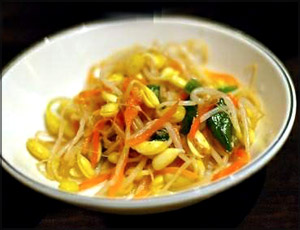
3 Fresh green chilies, seeded and sliced
1 Small onion, finely sliced
3 tablespoons scraped fresh coconut or desiccated coconut
1 teaspoon Salt
1 tablespoon Lemon juice, or to taste
Method : Wash bean sprouts thoroughly. Remove as many of the green
skins as possible. Drain well. Mix all ingredients well together. Serve
as an accompaniment to rice and curries. |



